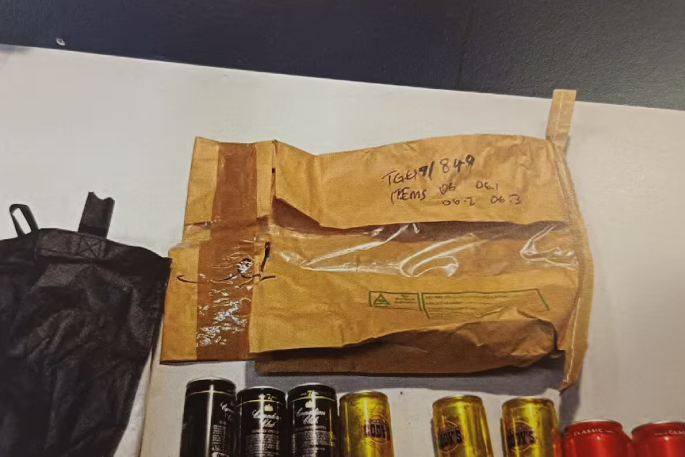
The production line and distribution of several cans of Coca-Cola, Canadian Club and Cody’s has come under the spotlight in a methamphetamine trial.
The court earlier heard that police discovered a “terraced” clandestine lab in the lower Kaimai Ranges in 2019. It was covered in camouflage netting and dug into the side of steep bush.
Inside they found a six-burner barbecue, gas elements, a hose siphoning water from an underground natural spring - and a metal cylinder so large it had to be removed by helicopter.
The items were all alleged to be used to manufacture methamphetamine.
Police also found some drinking cans - Coca-Cola, Canadian Club, and Cody’s - in the lab.
A man and woman are now on trial in the Tauranga District Court where they were jointly facing charges related to the manufacture of methamphetamine.
However, today the Crown dropped the charges relating to the woman’s involvement in methamphetamine manufacture.
She still faces a charge of possession of cannabis for sale but is no longer alleged to have had knowledge of or involvement in the methamphetamine lab.
The Crown called Detective Simon Wallace who analysed the cans and how they compared to ones found in a rubbish pit, rubbish bins and in a fridge on the defendant’s property, which borders the bush where the clan lab was found.
The discovery of the cans in Kmart bags at the suspected clan lab led Detective Simon to investigate the numbers stamped on the bottom of the cans.
In consultation with the producers of the relevant cans, Simon told the court he was able to figure out where and when - the exact time and date - the cans had come off the production line and been boxed up to be put on pallets for distribution.
The detective concluded more than a dozen cans found up and around the defendants’ dwelling had the same or nearly the same production information and time stamp as a handful retrieved from the clan lab.
Crown prosecutor Ben Smith took the detective through the 16-digit code on the base of various cans seized from the suspected clan lab, with their corresponding exhibit numbers, and talked about the similarities in the numbers to other cans found around the dwelling.
.jpg) Police analysed codes on the bottom of Canadian Club cans found in a clan lab, including this one, in their case against a couple charged with manufacturing methamphetamine. Photo: NZME.
Police analysed codes on the bottom of Canadian Club cans found in a clan lab, including this one, in their case against a couple charged with manufacturing methamphetamine. Photo: NZME.
Defence lawyer David Niven questioned the usefulness of this analysis in his cross-examination of the detective.
“You were trying to draw links between [the defendant] and the lab, through the distribution of drink cans?” David asked.
“Essentially, yes,” Simon replied.
David criticised Simon’s exclusion of cans without matching numbers - Simon had photographed them but had not noted down any specific numbers.
“What you’re not doing is trying to understand the distribution of cans across the whole site, you’ve excluded cans because you say they’re not relevant because the numbers don’t match up”, David put to the detective.
David suggested this created a bias, and didn’t create an opportunity for a whole pattern to help understand “what connection someone might have had with the clan lab and the property”.
“That’s one way of looking at it,” Simon says.
David was particularly interested in the presence of a foreign Coca-Cola can found in the clan lab - of a different volume and with a “k” in the spelling of “klassic”, which wasn’t analysed.
David also questioned what conclusions could be drawn given evidence about the large quantity of cans that could potentially have the same, or very similar, time and date stamps.
David put to Simon there was no evidence one way or the other to know how many cans with identical or near identical numbers could end up in the stores in the same area - in neighbouring supermarkets, dairies, or bottle stores - nor how long these cans might stay in stock.
“Your analysis needs to be treated with caution,” David says.
“No, I don’t accept this,” Simon replied.
The defence case, which has just begun, is that someone else accessed the property and was operating the methamphetamine lab without the defendants’ knowledge.
The defence spoke to the brother of the defendant, who gave evidence of the male defendant’s consistent, and legitimate, work history in the primary industries.
The trial continues.




0 comments
Leave a Comment
You must be logged in to make a comment.